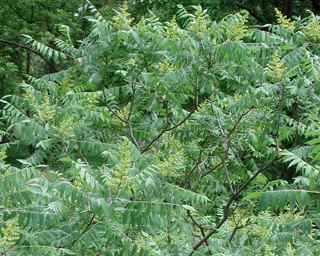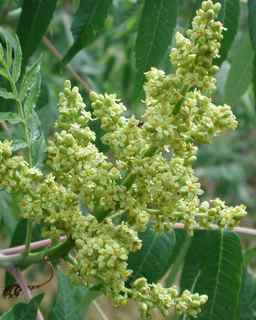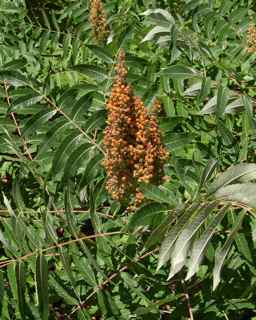| |
|
|
Leaves Max Licher @http://swbiodiversity.org, Usage Rights: Creative Commons Attribution-ShareAlike (CC BY-SA) | Flowers Max Licher @http://swbiodiversity.org, Usage Rights: Creative Commons Attribution-ShareAlike (CC BY-SA) | Fruit Max Licher @http://swbiodiversity.org, Usage Rights: Creative Commons Attribution-ShareAlike (CC BY-SA) | | | |
Origin: Native Similar Species: Rhus typhina, Rhus copallina, Ailanthus altissima, Toxicodendron vernix
General Description: Deciduous. A large shrub to small tree with short, crooked, leaning trunks and picturesque branches. Has a wide spreading, open crown.
Identification notes: Thicket-forming shrubs or small trees; bark dark gray; opposite or alternate, odd pinnately compound leaves, 11 to 31 leaflets, dark green above, paler beneath; small, pale yellow flowers in elongated clusters. Fruit pods, dark red, convex on both sides.
Height: To 20 feet Width: To 20 feet
Habitat Description: Found in rich soils in oak and ponderosa pine woodlands, in canyons and riparian zones, often forming thickets.
Plant Communities: Pinyon Juniper Woodland, Montane Conifer Forest, Riparian
Elevation: 5000 - 8000 feet
Color: Pale yellow Shape: Regular in elongated clusters
Tubular: N Flowering Period: Jun - Aug
Description: Compact terminal clusters to 8 inches long. Clusters are made up of tiny, 5 petaled flowers, to 1/8 inch wide. Petals pale yellow, sepals green.
Leaf Color: Dark green Type: Compound Shape: Narrow Margin: Toothed Attachment: Alternate Hairs: N
Description: Leaflets are dark green and smooth above, paler beneath, turning bright red in fall. Odd (unpaired terminal leaflet) pinnately compound, to 12 inches long, with up to 31 lance-shaped leaflets to 4 inches long.
Color: Red Type: Pod Description: Flowers are followed by bright red, hairy, somewhat rounded pods in erect, pyramidal clusters. Fruits mature from August to September and persist through the winter.
Bark Color: Gray Bark Texture (Mature): Smooth Bark and Branch Description: Smooth, with numerous lenticels (raised pores that allow gas exchange), developing scaly ridges with age.
Spines, thorns or prickles: N |
|



